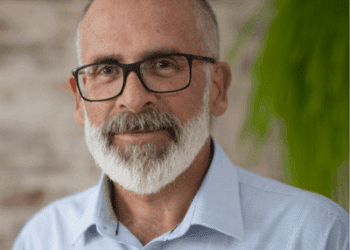Amid this volatility however, mutual companies – those owned by their customers or policyholders rather than shareholders – have consistently outperformed, particularly in the risk insurance industry.
During the Global Financial Crisis, mutual life insurers saw a 23 per cent growth rate, compared to just 7 per cent for the broader industry, according to the International Cooperative and Mutual Insurance Federation (ICMIF). Even amid the challenges of COVID-19, while global life insurance premiums dropped by 1.5 per cent, mutual insurers experienced a 1.5 per cent increase (Source: ICMIF).
This growing presence reveals a simple truth: the mutual business model performs well, even amid times of crisis. So, what’s the secret behind the success of this approach, and what lessons can be applied to risk advice?
Why mutuals outperform in risk advice
As member-owned entities, mutuals’ goals align with their members’ needs, prioritising long-term value and trust over the short-term profit maximisation that is typical of shareholder models. This is a large reason why mutual companies often rank highly in industry metrics such as Net Promoter Score (NPS), which measures an organisation’s performance through its customers’ eyes.
Bain & Co research shows that companies focused on long-term profitable growth have an NPS twice as high as that of the average company. In addition, risk advisers surveyed in the 2024 Australian Financial Advice Landscape Report awarded a mutual risk insurer with the highest NPS score in the industry for the second consecutive year. These scores reflect deeper customer loyalty, increased referrals and stronger revenue growth – demonstrating that putting members first can be a winning strategy.
A high NPS is strongly linked to factors such as retention rates, competitive pricing and operational efficiencies (Source: Bain & Co). These factors enable mutuals to foster long-term, stable client relationships, which ultimately reduces churn and creates more growth opportunities for the advisers they work with.
Tangible benefits for advisers
The benefits of partnering with mutual risk insurers go beyond just strong client relationships; they directly translate into a few tangible advantages for advisers:
1. Fewer policy lapses
Mutual providers have stronger retention rates, which for advisers equates to a more stable environment where clients are more likely to stay loyal and policies are less likely to lapse. According to the NMG Retail Advice Channel Risk Distribution Monitor Q4 2024, an Australian mutual risk insurance business has an annual lapse rate of 5 per cent, compared to an industry average of 14.5 per cent. In practice, this means fewer lost clients and more opportunities for long-term, proactive engagement. With less time spent replacing business, advisers can focus on fostering deeper relationships and pursuing new growth opportunities in a competitive market.
2. Cross-sell and upsell opportunities
Clients who are satisfied with their risk insurance are more likely to see the value in expanding their coverage as their needs evolve. This presents advisers with opportunities to upsell by adjusting coverage levels in line with a client’s increasing income, growing practice, or rising financial commitments. Additionally, it opens the door to cross-selling other financial solutions that enhance their overall financial security, deepening the adviser’s value proposition and driving business growth.
3. Organic referrals
One of the unique characteristics of a mutual is the profit-sharing arrangement, where profits are either reinvested in the business or distributed among its members. This ongoing benefit creates a value proposition that clients are more likely to recommend to friends, colleagues and family members, compared to traditional insurance offerings, which typically only provide financial payback in the unfortunate event of a claim. The sense of shared value and mutual benefit encourages clients to refer others, driving organic growth for advisers and paving the way for sustainable, long-term success.
Mutuals’ winning formula for loyalty, retention and growth
Today, the financial services industry is increasingly defined by economic uncertainty, regulatory scrutiny and consumer demand for transparency. This means that sustainable business practices are more important than ever before, since a long-term view is vital when it comes to client retention and organic growth.
The adviser-mutual partnership then offers a distinct edge: the trust, loyalty and long-term value that comes with a member-first approach provides advisers with the stability needed to focus on what matters most: their clients’ futures.
Michael Pillemer, CEO, PPS Mutual




If “Mutuals” are the best product delivery model, please explain why all the “mutuals” [AMP, National Mutual, Colonial Mutual, City Mutual] disappeared. Same with Health Funds – they all went public.
I will give you my opinion for what it is worth – mutuals have no real accountability, unlike a public company and, inevitably,become a “gravy train” for those running them and are grossly less efficient than public companies!
Posting as John Hall, not anonymous.
Good question. The answer to your question is human nature. People put in positions of power get greedy. And then someone comes along, waves a magic wand, offers to demutualise the mutual, and off we go. AMP revisited.George Trundle come back, all is forgiven
Yes it’s true those in charge of National Mutual and AMP in particular in the 80s and 90s should be in jail. These were the people who developed the famous golden handcuffs, a.k.a. agency development loans designed to tempt successful advisers for one mutual to the other. These were also the people who decided to keep reinventing whole of life’s so the bonuses were never guaranteed once declared. These are also the people who invented a little child endowment whole of life offering that took up the whole of the child endowment payment over 20 years but had NIL cash value.. Those same mutuals then engaged in replacing whole of life contracts with things like MLC Breakthrough, which also had no cash value after after a period of time.
The problem was no one was supervising the people who ran the mutuals, not the concept of mutuals. Now we have insurers which came out and supported LIF, wondered why new business dropped off by 60%,watched as their balanced pool disappeared, leaving a whole bool of lives which were heading towards claims purely because of age, and then responded by introducing outrageous “gouging” of legacy premiums and the introduction of Duration Based Pricing.
All that was done to keep the shareholder value in check. And of course to pay the CEOs bonus which is directly linked to shareholder value.
I put it to you there is no real difference in terms of behaviour between yesterday’s Big Mutuals and today’s shareholder driven obscenities
Point 1. is comparing apples with oranges. The mutual’s lapse rate of 5% is expected and due to newer, early duration policies and possibly on younger lives. The 14.5% lapse rate is on much older and established books where there are more older lives, legacy policies and shock lapses if repricing. All new insurers regardless of their operating model will have lower lapse rates for the first 10+ years, until their lapse experience becomes credible.
Pity there are hardly any true risk advisers left to write business with this type of model…
Great products nice article…. is accreditation open to all advisers?
(I tried a few years’ ago and was informed it was by invitation only)